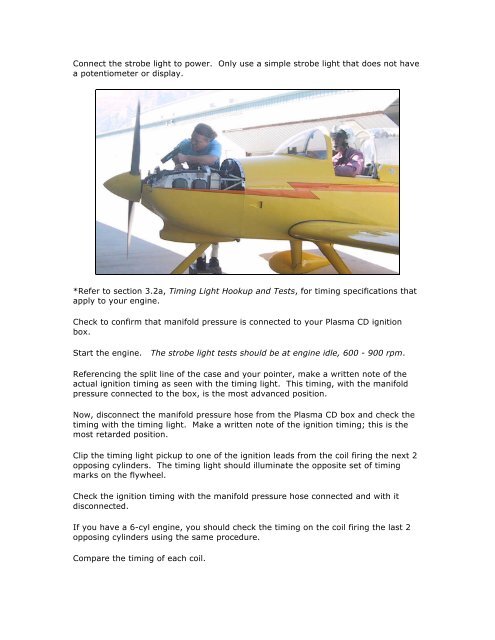Read On-line - Light Speed Engineering
Read On-line - Light Speed Engineering
Read On-line - Light Speed Engineering
Create successful ePaper yourself
Turn your PDF publications into a flip-book with our unique Google optimized e-Paper software.
Connect the strobe light to power. <strong>On</strong>ly use a simple strobe light that does not have<br />
a potentiometer or display.<br />
*Refer to section 3.2a, Timing <strong>Light</strong> Hookup and Tests, for timing specifications that<br />
apply to your engine.<br />
Check to confirm that manifold pressure is connected to your Plasma CD ignition<br />
box.<br />
Start the engine. The strobe light tests should be at engine idle, 600 - 900 rpm.<br />
Referencing the split <strong>line</strong> of the case and your pointer, make a written note of the<br />
actual ignition timing as seen with the timing light. This timing, with the manifold<br />
pressure connected to the box, is the most advanced position.<br />
Now, disconnect the manifold pressure hose from the Plasma CD box and check the<br />
timing with the timing light. Make a written note of the ignition timing; this is the<br />
most retarded position.<br />
Clip the timing light pickup to one of the ignition leads from the coil firing the next 2<br />
opposing cylinders. The timing light should illuminate the opposite set of timing<br />
marks on the flywheel.<br />
Check the ignition timing with the manifold pressure hose connected and with it<br />
disconnected.<br />
If you have a 6-cyl engine, you should check the timing on the coil firing the last 2<br />
opposing cylinders using the same procedure.<br />
Compare the timing of each coil.


